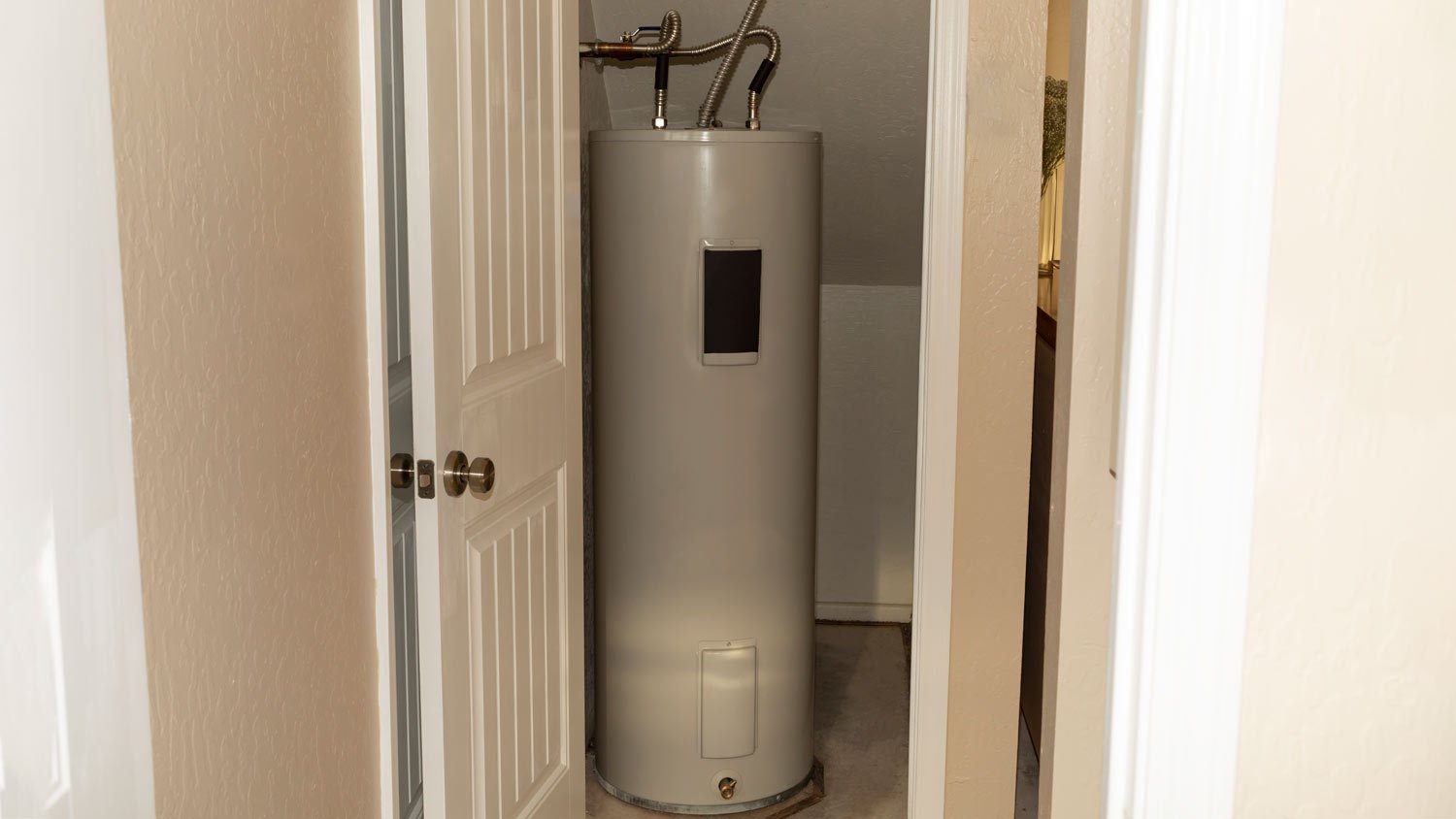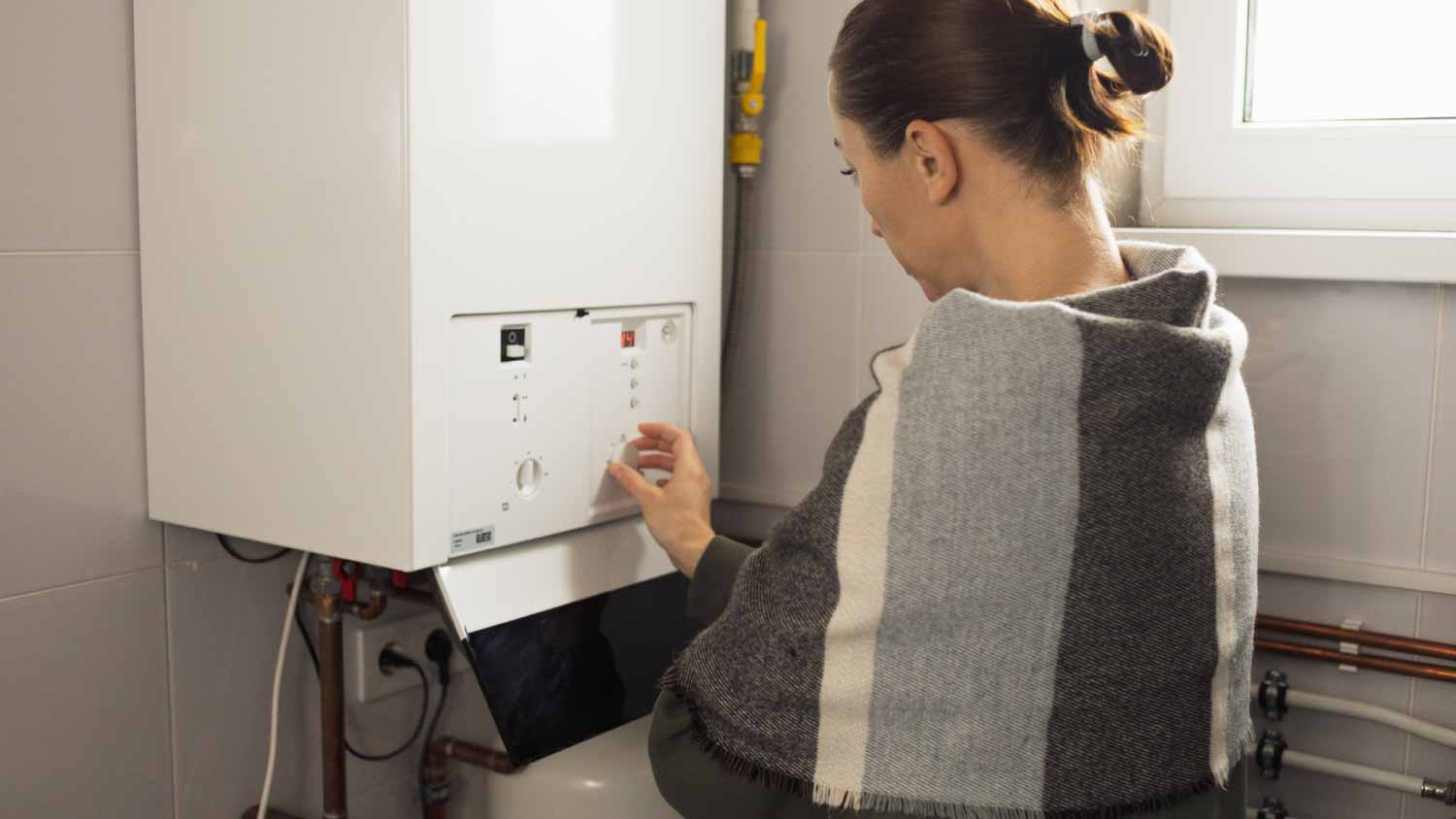Water Heater Expansion Tank Installation Diagram: How It Works
This addition will ensure your water heater never gets so hot that it hurts
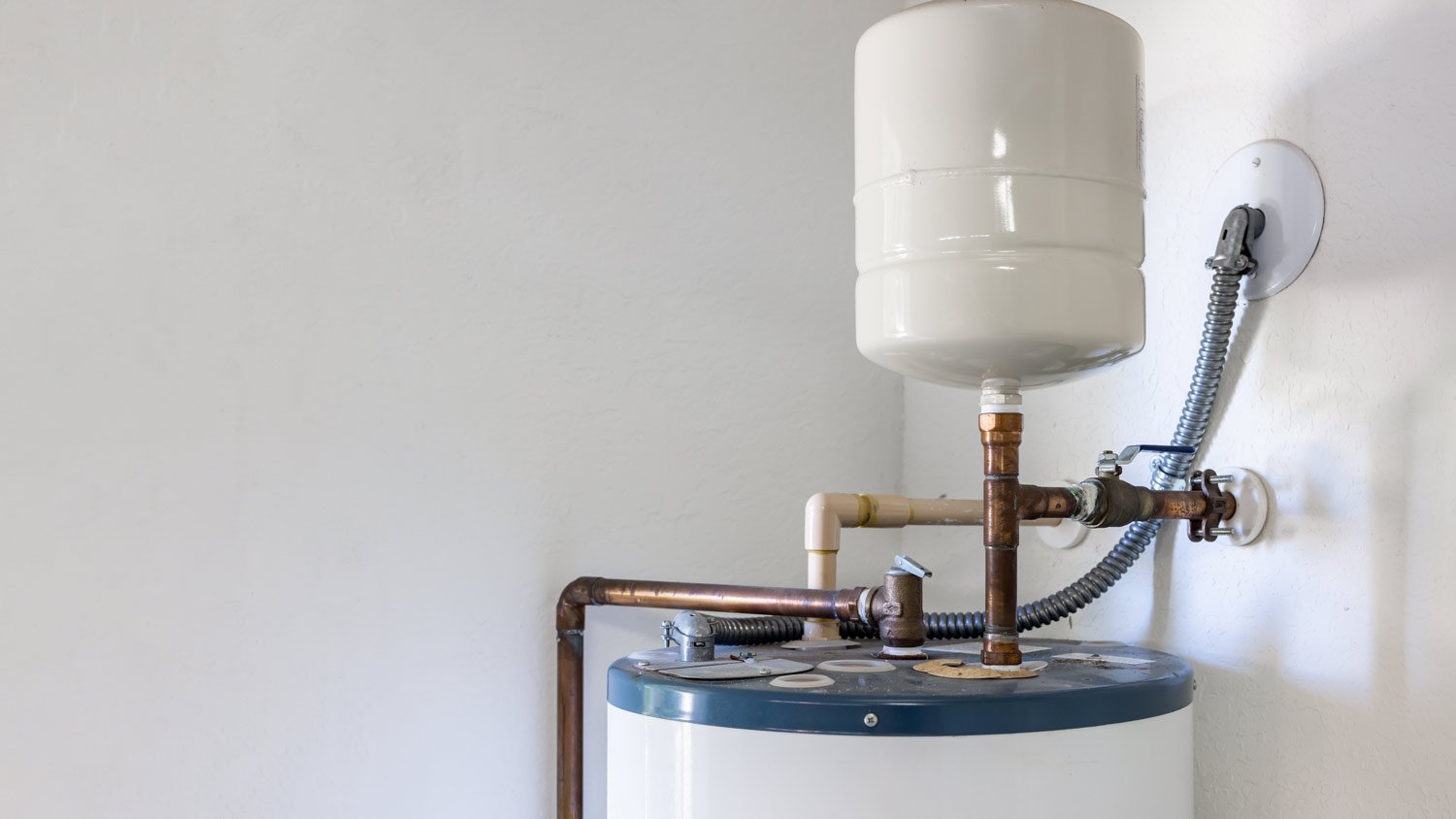

Water heater expansion tanks limit excess pressure build-up in water heaters.
They’re composed of pressurized air and a bladder that inflates and shrinks to store water backflow.
Checking for leaks, fixing broken or damaged connections, and gauging pressure levels are important maintenance tasks.
Water heater expansion tanks cost between $150 and $450.
Water heaters accumulate a lot of pressure. However, installing an expansion tank in your setup can be a helpful way to offload some of that heat so damage doesn’t occur. Whether you’re planning on adding one for the first time or are replacing the existing tank, it’s a good idea to learn about the basics of how an expansion like this works.
What Is a Water Heater Expansion Tank?
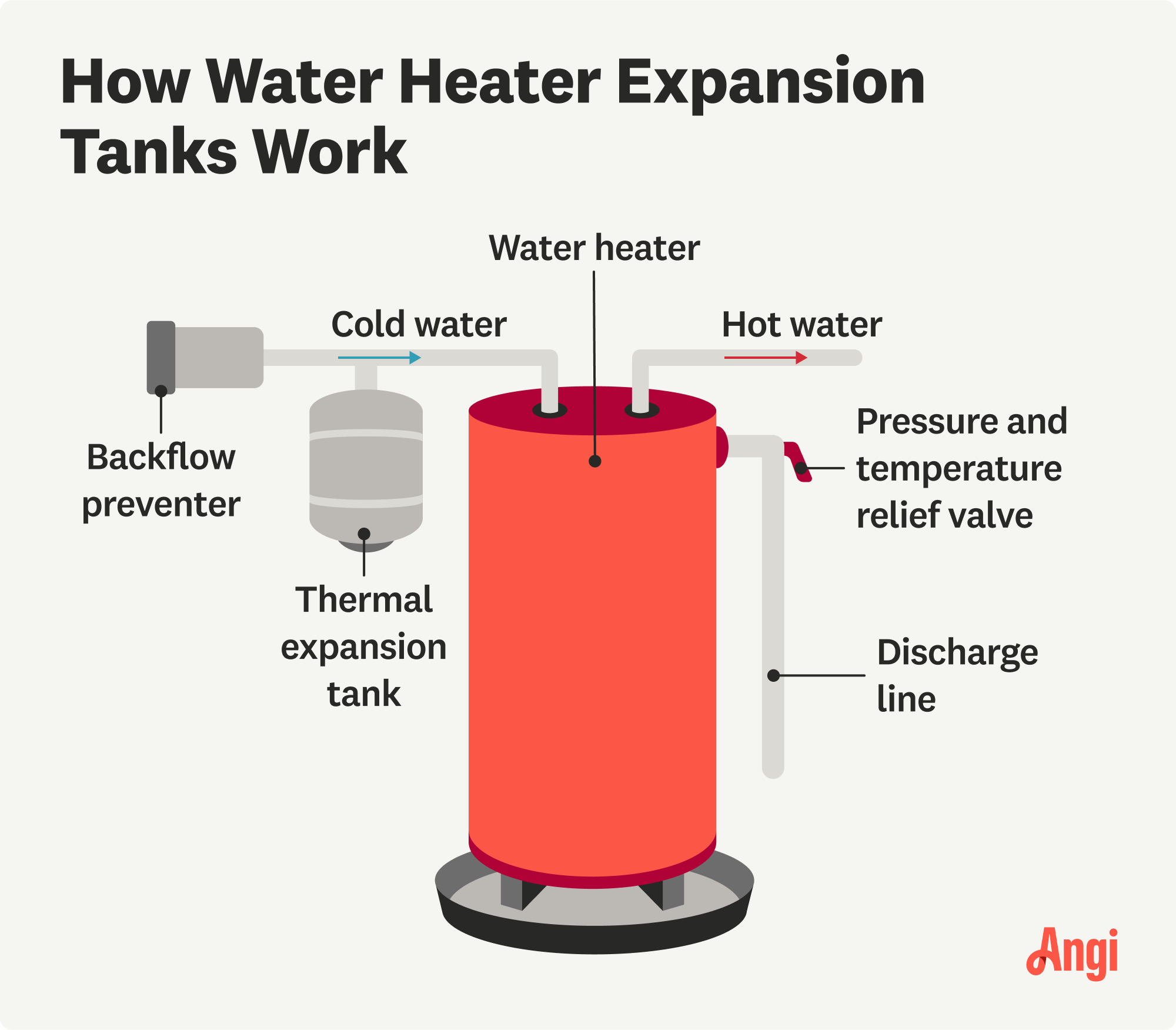
The water in your tank expands as it heats up. However, it has nowhere to go because the cold water valve that it comes through has checks in place to inhibit water from flowing back out. Without protective measures, that can cause the pressure in your central tank to build up to unsustainable levels—the standard PSI in water tanks is 50 to 100, and if it rises above this limit, damages can occur both inside the tank and in any appliances that use hot water in your home.
So, what is a water heater expansion tank? These additions provide an outlet for excess pressure and water so the levels in your central tank never get too high. Instead of having nowhere to go, surplus water can now flow into the expansion, where it will be balanced by built-in compressed air that prevents it from filling all the way up. In turn, this keeps the PSI levels normal in both the main tank and the expansion.
What Are the Different Parts of a Water Heater Expansion Tank and How Do They Function?
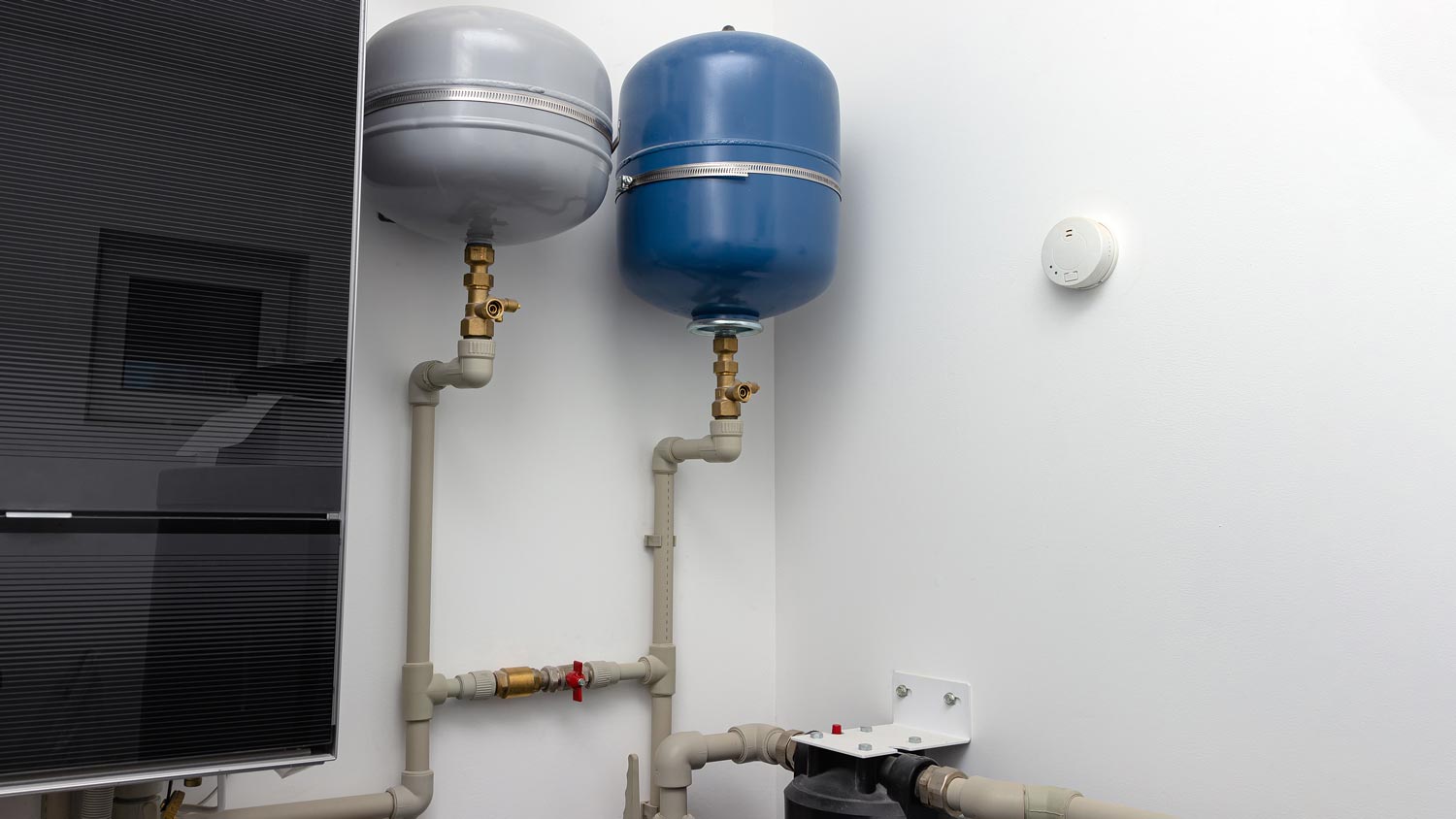
The number of parts in a water heater expansion tank is small compared to the main water heater, but they do a big job. Here’s everything that makes an extra like this work as it should.
Air Valve and Rubber Cap
The air valve is located at the top of an expansion tank and allows you to quickly and easily measure the pressure within the tank with a pressure gauge. Simply attach the accessory to the valve and wait a few moments to get a reading. The PSI will be listed on new expansion tanks when purchased, but taking this extra step allows you to verify these levels and ensure that you’re not unintentionally installing a faulty product.
Similarly, you can use this element to gauge pressure levels on an existing tank if you suspect it’s malfunctioning. Always seal with the rubber cap to prevent pressurized air from leaking out and causing the system to fail sooner than it should.
Thermal Expansion Tank
The tank itself is typically made of stainless steel or aluminum and features two openings: one for the air valve and another for the cold water valve.
Bladder
Inside the tank are two components: pressurized air and a bladder that expands and shrinks as necessary to accommodate water flow. The pressurized air will prevent the bladder from expanding and filling the tank completely, but if it does anyway, that’s a sign you need to make a replacement or hire someone who fixes water heaters ASAP.
Cold Water Valve
When a water heater has too much water, it may try to exit via the cold water valve but fail because of the checks that prevent reverse water flow. That’s why expansion tanks connect to cold water valves. Instead of having nowhere to go, the excess water will now find a home in this new addition rather than being returned to the heater, where it will cause pressure to continue building.
Dielectric Union
This part is the intermediary between a water heater's cold water valve and the pipe connecting it to the expansion tank. It’s designed to prevent corrosion that can occur when different types of metals come into contact, like a copper pipe linked to a stainless steel heater.
Copper Adapter
This part connects to the dielectric union at the base and a tee fitting that will connect to the expansion tank pipe at the top.
Tee Fitting
The tee fitting connects to the top of the adapter and the bottom of the expansion tank pipe.
Copper Expansion Tank Pipe
This pipe is the final measure that connects a water heater and an expansion tank. Once it’s installed, your system is ready to be tested.
Repairing vs. Replacing a Water Heater Expansion Tank
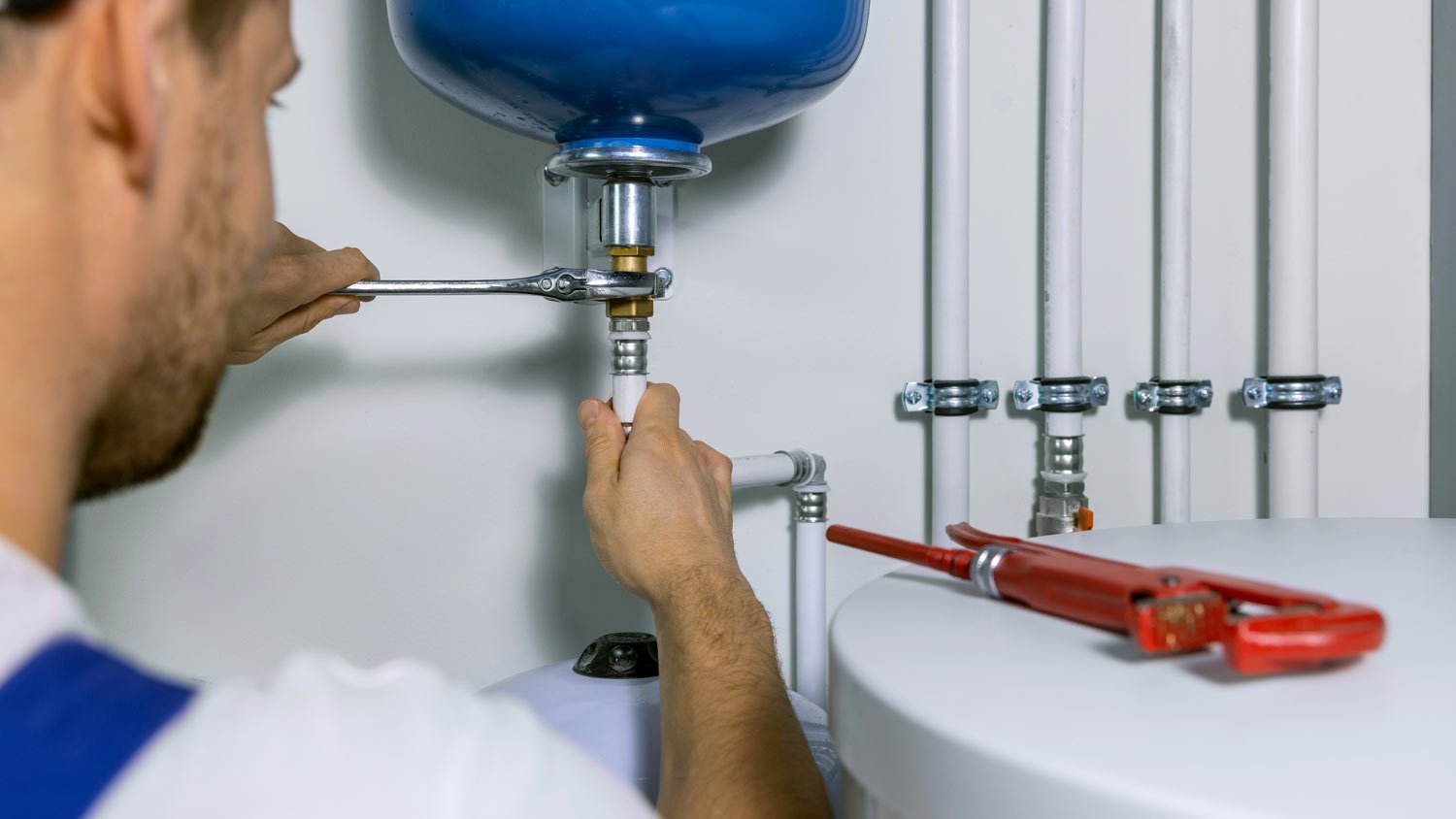
Water heater expansion tanks cost between $150 and $450 on average, while small water heater repairs are equivalently priced. What’s more, some expansion tank damages are near impossible to fix, so you might find you’re better off opting to replace over repair.
Water Heater Expansion Tank Maintenance Tips
Add these to your water heater checklist to keep it up and running for the long haul.
Watch for Leaks
When the pressure levels in a water heater expansion tank are off, the bladder is more likely to fill all the way up, resulting in leaks. It won’t leak all the time like a broken faucet—but it will gush water any time you run a hot bath or fill the sink for washing your dishes. A pro may be able to restore the original pressure levels, but a replacement will be necessary if there’s already extensive damage.
Periodically Gauge Pressure Levels
You don’t need to wait for your expansion tank to start leaking to check the pressure levels. In fact, it’s a good idea to take a look once or twice a year whether there are problems or not. Remove the rubber cap covering the air valve, attach a pressure gauge, and check back in a moment for the reading. It should be the same as it was when you purchased it, and you’ll need to take action if not.
Reinforce Pipe and Valve Connections
If the connections between the expansion tank and the central water heater start to erode or loosen, pressurized air or water backflow is more likely to leak out and cause problems. Sometimes you’ll notice these issues right away, but more likely, they won’t create any obvious damage until it’s too late to do anything about them. Avoid these scenarios by checking on the pipes and fittings that join your tank and water heater one or two times a year, and replacing any that are exhibiting signs of corrosion like rusting.
DIY Water Heater Expansion Tank Installation vs. Hiring a Pro
If you’ve decided you do need a water heater expansion tank, the natural next step is to wonder whether you can set it up yourself or if hiring a pro is absolutely necessary. Installing a water heater expansion tank is a relatively easy DIY, but some experts caution against going this route to avoid potential damages and costly repairs. If you’re not so sure about your skills in this department, consider hiring a water heater installation company near you to guarantee the job is done properly.



